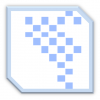Breakout code design exercise
[font=arial, sans-serif]
Hi all,[/font]
Id like to do an exercise to come up with a code design for the traditional game breakout game (google if unsure)[/font]
using an entity component system to see what designs you all come up[/font]
with, and to practice my designing skills =P.[/font]
I have my own ideas how to design it, but im more interested in the way other people think, and hopefully I might learn a thing or 2.[/font]
Im particularly interested in designs engineered towards a data-driven entity[/font]
system such as Artemis, where data and behaviour are split into components, and systems processing those components:[/font]
For simplicity, I want to focus on:[/font]
- Ball[/font]
- Paddle[/font]
- Blocks[/font]
- Powerups[/font]
- Ball travels with linear velocity, initially at a random upward angle.[/font]
- Ball bounces off left, top, and right boundaries[/font]
- Ball bounces of blocks[/font]
- Ball bounces off paddle[/font]
- Blocks disappear when a ball touches them[/font]
- Blocks disappear when a bullet touches them[/font]
- Powerups have a chance of spawning when a block disappears[/font]
- Powerups travel down the screen until they hit the bottom boundary, at which point they are destroyed.[/font]
- A powerup is engaged when it collides with the paddle[/font]
- Powerups do not collide with blocks[/font]
- Powerup 1 - Ball sticks to paddle instead of rebounding[/font]
- Powerup 2 - Paddle is elongated in size[/font]
- Powerup 3 - Paddle can shoot bullets when fire is pressed for x seconds[/font]
- Bullets are destroyed when they collide with a block[/font]
- Bullets are destroyed when they hit the top boundary[/font]
- 3 lives[/font]
- loose life when ball touches bottom boundary[/font]
- game over at 0 lives[/font]
- game win when blocks == 0[/font]
I would say there is a difference between a data-driven system and a component-based system. That article describes a component based system.
Are you looking specifically for components? Otherwise this seems to be an appropriate design..
Are you looking specifically for components? Otherwise this seems to be an appropriate design..
[quote name='Telios' timestamp='1328190406' post='4908704']
I would say there is a difference between a data-driven system and a component-based system. That article describes a component based system.
[/quote]
When I say data-driven im actually meaning data oriented, where data is separated into structs (components), and behaviour is separated into systems.
[quote name='Telios' timestamp='1328190406' post='4908704']
Are you looking specifically for components?
[/quote]
Yeah, Im interested in how you break down your components and systems. Do you have a system per component-type? or do systems process multiple components at once? Do your systems process lists of entities, grabbing the needed components off each, or do they just process lists of components?
Heres my example design:
Components:
* Position - x, y
* Visual - texture
* Motion - velocity
* Physics - mask, dimensions, shape type
* Input - touch position
* Identity - stores the type of object (ball, paddle, block, powerup)
* Player - stores number of lives
* Powerup1/2/3 - stores powerup type enum, and any state associated with the powerup (maybe a timer)
Systems:
* RenderSystem - renders all visual components
* CollisionSystem - updates velocities of motioncomponents, does collision detection and response with physics components, raises collision events
* InputSystem - processes drag components, setting x-position to mouse position
* CollisionEventSystem - defines what happens when a collision occurs, responds to collision events from collision system: spawns powerups, engages powerups, deletes blocks
* GameSystem - processes player component, checks when lives == 0, checks when blocks == 0
* PowerupSystem - processes all powerup components
What do you think? Im not sure the best way to handle events between systems. Or how to tell the type of an object, so when a circle collides with a rect, how i know that rect is a block and not a paddle. Thats wat I thought the identity component could be used for.
thoughts?
I would say there is a difference between a data-driven system and a component-based system. That article describes a component based system.
[/quote]
When I say data-driven im actually meaning data oriented, where data is separated into structs (components), and behaviour is separated into systems.
[quote name='Telios' timestamp='1328190406' post='4908704']
Are you looking specifically for components?
[/quote]
Yeah, Im interested in how you break down your components and systems. Do you have a system per component-type? or do systems process multiple components at once? Do your systems process lists of entities, grabbing the needed components off each, or do they just process lists of components?
Heres my example design:
Components:
* Position - x, y
* Visual - texture
* Motion - velocity
* Physics - mask, dimensions, shape type
* Input - touch position
* Identity - stores the type of object (ball, paddle, block, powerup)
* Player - stores number of lives
* Powerup1/2/3 - stores powerup type enum, and any state associated with the powerup (maybe a timer)
Systems:
* RenderSystem - renders all visual components
* CollisionSystem - updates velocities of motioncomponents, does collision detection and response with physics components, raises collision events
* InputSystem - processes drag components, setting x-position to mouse position
* CollisionEventSystem - defines what happens when a collision occurs, responds to collision events from collision system: spawns powerups, engages powerups, deletes blocks
* GameSystem - processes player component, checks when lives == 0, checks when blocks == 0
* PowerupSystem - processes all powerup components
What do you think? Im not sure the best way to handle events between systems. Or how to tell the type of an object, so when a circle collides with a rect, how i know that rect is a block and not a paddle. Thats wat I thought the identity component could be used for.
thoughts?
This topic is closed to new replies.
Advertisement
Popular Topics
Advertisement





